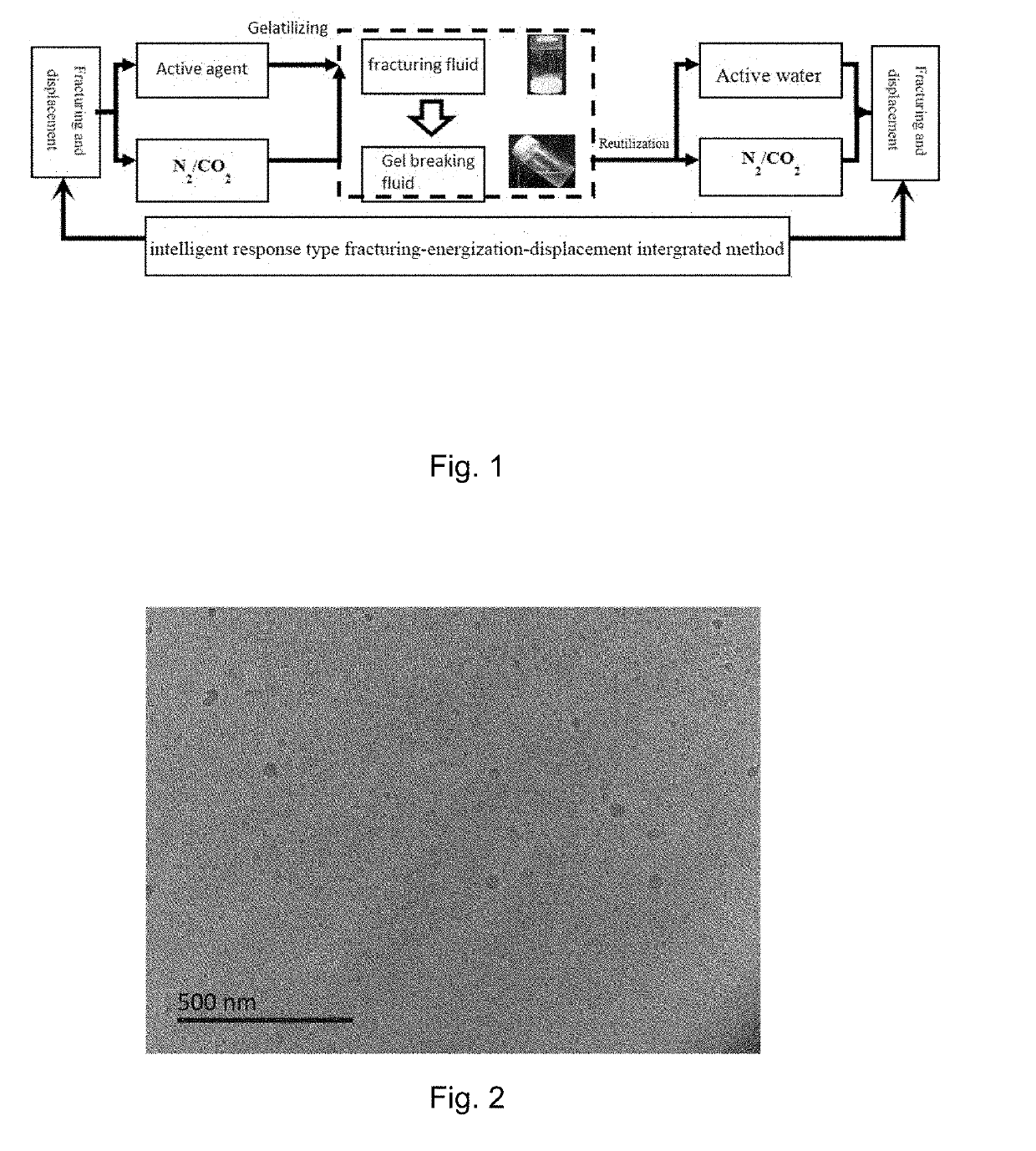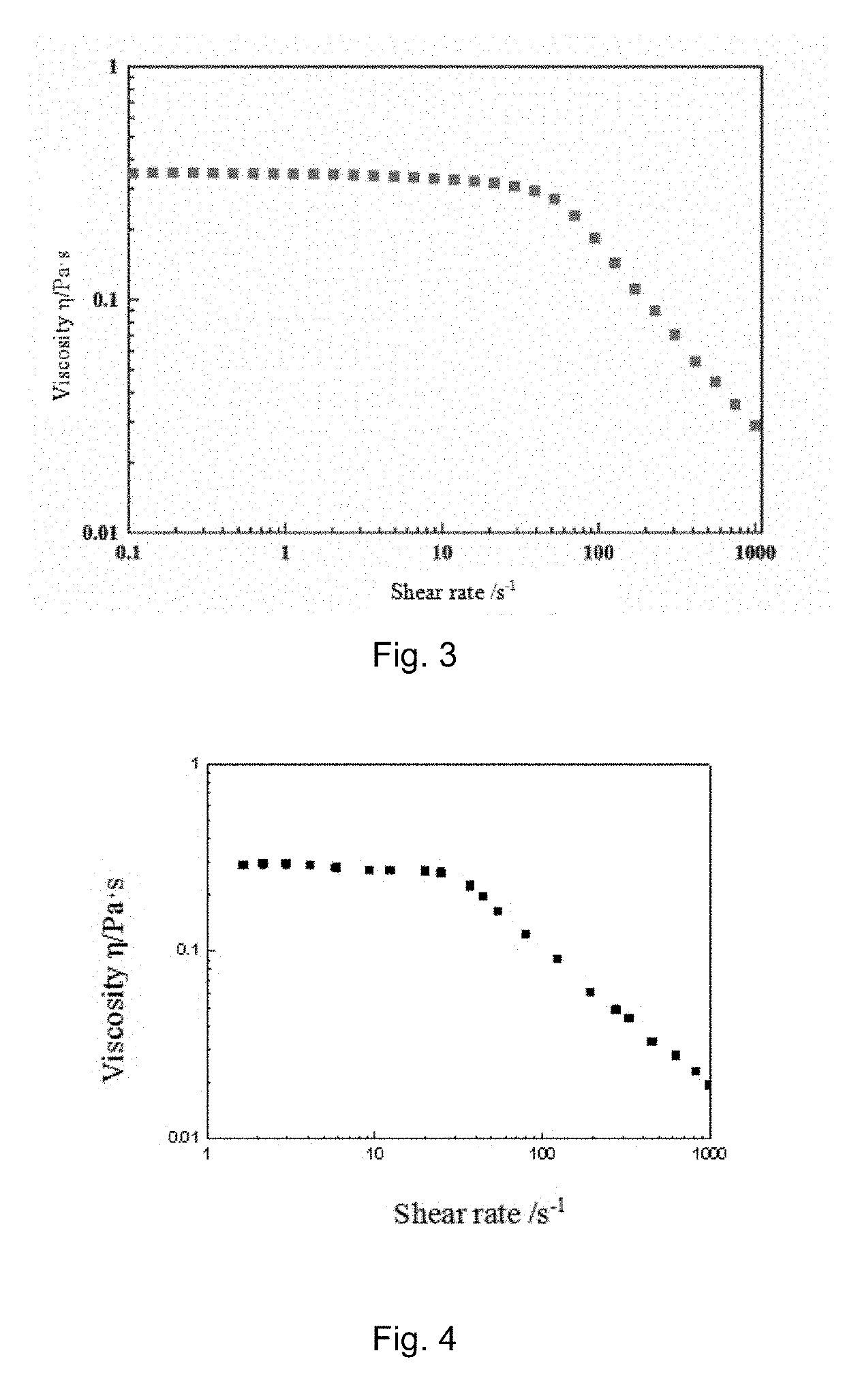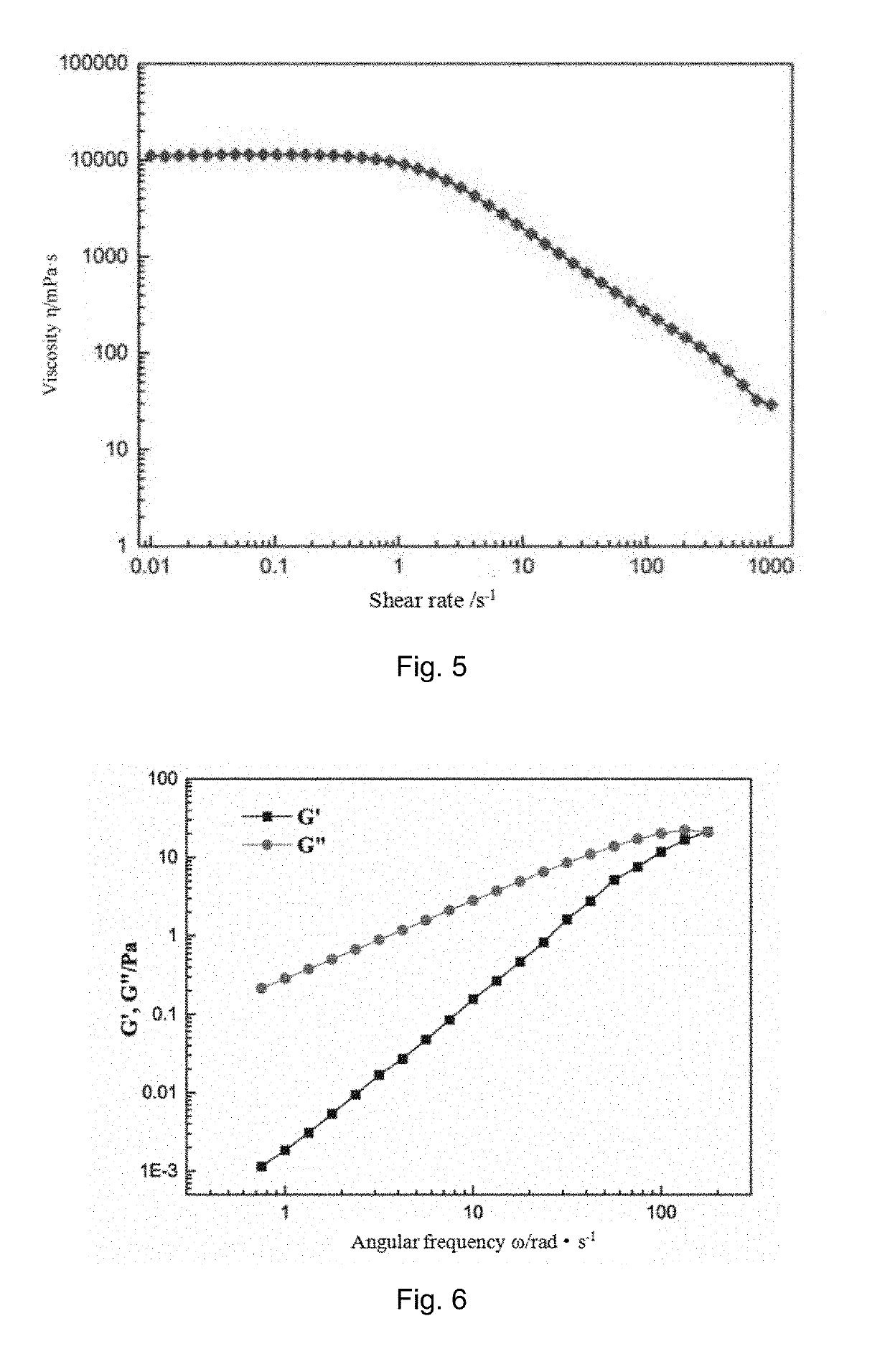Co2-sensitive fracturing and displacement fluid and method of making the same and method for fracturing and displacement of tight oil reservoir
a technology of fracturing and displacement fluid and co2 sensitive, which is applied in the direction of fluid removal, bulk chemical production, borehole/well accessories, etc., can solve the problems of reducing the yield of a single well, affecting the efficiency of oil production, and affecting the utilization rate of reservoir matrix reserves, so as to increase the utilization rate of tight oil, the effect of reducing the cost and effect increasing of the oil field and significantly improving the utilization degree of tight oil
- Summary
- Abstract
- Description
- Claims
- Application Information
AI Technical Summary
Benefits of technology
Problems solved by technology
Method used
Image
Examples
example 1
[0087]4 g of erucoylamidopropyl hydroxysulfobetaine, 1.2 g of N,N,N′,N′-tetramethyl-1,3-propanediamine, 0.5 g of sodium p-toluenesulfonate, 0.5 g of sodium bis(2-ethylhexyl)sulfosuccinate are added to a beaker, and ultrapure water is added until 100 g; the formed solution is heated to 20° C. in a water bath and stirred for 20 min until evenly mixed to obtain a zwitterionic base fluid. CO2 in a gaseous state is introduced into the obtained zwitterionic base fluid at a rate of 8 mL·min−1 until the system is uniformly gelatinized and clear and transparent, and then the obtained mixture is allowed to stand for 24 hours or above until bubbles in the gelatinized fluid disappear, so that the gelatinized fluid F1 is obtained; the obtained gelatinized fluid F1 is poured into the temperature-resistant and pressure-resistant autoclave in the temperature-resistant and pressure-resistant foaming device, and under 35° C. and 10 MPa, CO2 in a liquid state is re-introduced into the gelatinized flui...
example 2
[0088]2.23 g of sodium octadecyl sulfonate, 2.1 g of N,N-dimethylpropanolamine, 0.3 g of octylphenyl polyoxyethylene ether (TX-100) are added to a beaker, and ultrapure water is added until 100 g; the formed solution is heated to 50° C. in a water bath and stirred for 5 minutes until evenly mixed to obtain an anionic base fluid. CO2 in a gaseous state is introduced into the obtained anionic base fluid at a rate of 10 mL·min−1 until the system is uniformly gelatinized and clear and transparent, and then the formed mixture is allowed to stand for 24 hours or above until bubbles in the gelatinized fluid disappear, so that the gelatinized fluid F2 is obtained; the obtained gelatinized fluid F2 is poured into the temperature-resistant and pressure-resistant pressure autoclave in the temperature-resistant and pressure-resistant foaming device; and under 32° C. and 8.5 MPa, CO2 in a liquid state is re-introduced into the gelatinized fluid F2 through the bottom of the gelatinized fluid F2 a...
example 3
[0089]2.11 g of erucoylamidopropyl dimethylamine, 0.4 g of sodium maleate, 0.35 g of fluorocarbon surfactant are added to a beaker, and ultrapure water is added until 100 g, and the formed solution is heated to 40° C. in a water bath and stirred for 8 min until evenly mixed to obtain a nonionic base fluid. CO2 in a gaseous state is introduced into the obtained nonionic base fluid at a rate of 12 mL·min−1 until the system is uniformly gelatinized and clarified and transparent, and then the formed mixture is allowed to stand for 24 hours or above until bubbles in the gelatinized fluid disappear, so that the gelatinized fluid F3 is obtained; the obtained gelatinized fluid F3 is poured into the temperature-resistant pressure-resistant autoclave in the temperature-resistant and pressure-resistant foaming device; and under 25° C. and 10 MPa, and CO2 in a liquid state is re-introduced into the gelatinized fluid F3 through the bottom of the forming liquid F3 at a flow rate of 15 ml·min−1 un...
PUM
 Login to View More
Login to View More Abstract
Description
Claims
Application Information
 Login to View More
Login to View More - R&D
- Intellectual Property
- Life Sciences
- Materials
- Tech Scout
- Unparalleled Data Quality
- Higher Quality Content
- 60% Fewer Hallucinations
Browse by: Latest US Patents, China's latest patents, Technical Efficacy Thesaurus, Application Domain, Technology Topic, Popular Technical Reports.
© 2025 PatSnap. All rights reserved.Legal|Privacy policy|Modern Slavery Act Transparency Statement|Sitemap|About US| Contact US: help@patsnap.com



